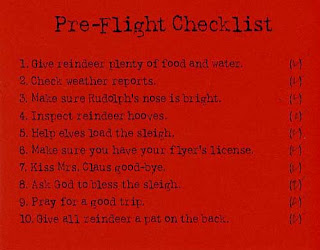Setting up your copter for the first flight
- Think safety! Get into good habits from the start and don't get sloppy or be tempted to cut corners
- Take your time. It can be tempting to just throw everything together to try and get your copter flying in as short a time as possible, but take the time to do it properly as it will save problems later.
- Know the risks. A multicopter is basically a flying lawnmower and can do serious damage to yourself and others. Not only that, but the Lipos we use to power our copters are potential bombs, so ensure that you follow proper charging procedures and store them safely and check them regularly for damage. Many multicopters are made using carbon fibre and care must be taken when working with it as carbon fibre dust is extremely dangerous if ingested.
- Remove Propellers. Probably the single biggest cause of accidents with multicopters is motors suddenly spooling up when working on the copter with power on. Always ensure that you remove the propellers when making any adjustments with power on.
- Suitable Location. Don't be tempted to test fly your copter in your front room or basement, find a large open field away from other people and property. A multicopter can fly surprisingly fast and can gain altitude quickly.
- Connecting the Battery. Don't connect the battery until you are ready to fly and once the battery is connected assume that the throttle is armed and don't be tempted to fiddle with the copter at this point. Before connecting your battery make sure that the transmitter is turned on and that the throttle is set to zero and if you have throttle lock on your transmitter enable this function.
- Situational awareness. Be aware of your surroundings and any potential hazards such as overhead power lines, other RC aircraft and most importantly other people and animals. Also take note of the prevailing wind direction and beware that the copter may suddenly catch the wind if you climb above tree level.
- Know your limits! Until you are confident in your flying ability, avoid high speed or high altitude flying. Keep the copter close to you to avoid losing orientation and if you do lose orientation it is better to lower the throttle and try to land than rather than risking flying further away or even the possibility of a fly away.
- During flight. For your first flights try to keep low (2-3m) and slow (walking pace). When your battery is getting low, avoid flying high. Stay in one spot and don't walk around as you might trip as it's difficult to concentrate on walking and flying at the same time, particularly walking backwards.
- After flight. When you have landed the danger isn't over until the battery has been disconnected. Leave the transmitter on and set the throttle to zero and set throttle lock. Only after you have disconnected the battery is it safe to turn off the transmitter.
I can't write your pre-flight check for you, but I can give some advice to the sort of things that should be in it. Once you have written your list, you should print it out, laminate it and stick it to something that you always take to the field with you. I have mine written on the back of my transmitter. There's no point in doing this if you're not going to use it, so get in the habit and use it every flight. Real pilots with thousands of flight hours still use a check list for every take-off and landing and so should you.
What should be in it? - Here's what's in mine.
Pre-Start
- Inspection (physical and visual inspection of the copter for damage)
- Area Clear (Check that it is safe to fly)
- Tx Antenna Up (Pretty obvious, but mainly for old school radios)
- Tx On
- Check Correct Model Memory (Quite important this one!!)
- Sticks, Switches, Batt (Check battery voltage and set sticks and switches)
- Throttle Down+Locked
- Connect Flight Batt
- Area Clear (make sure it's still safe to fly)
- Throttle Hold Off
- Arm Motors
- Start Timer (I time my flights to have an idea of when to land)
- Disarm Motors
- Throttle Down+Locked
- Disconnect Flight Batt
- Tx Off
- Tx Antenna Down
- Inspection - Full inspection of the copter to check for damage. The vibration from flying can cause screws and nuts to become loose, so have a good check for these. Check for any damage to the frame and cracks and chips in propellers and make sure that they are still attached securely. Check the Lipo and cables for any damage. I always have a quick feel of the motor and ESC temperatures because an excessively warm motor or ESC could be symptom of a component that is soon going to fail.


well written article , thumbs up (came here from RC groups)
ReplyDeleteKids... Esp. young ones, will want to fly it. its probably not a good idea for them to try. Just as with a gun in your house, try to keep it out of reach of children and un loaded (no battery in it) so if they do get it out, they still cant fly it. You may be able to teach them to fly it and make sure they only fly it when your'e there but I was a kid once and a parent NOT being there wouldnt stop me from flying if i wanted. I suspect there are alot of kids out there who are the same way!
ReplyDelete